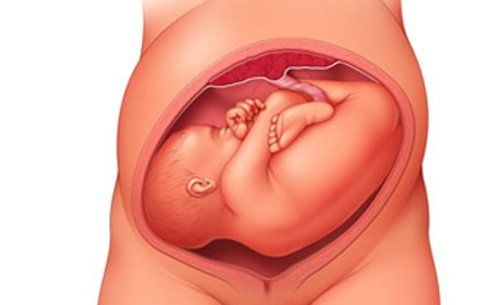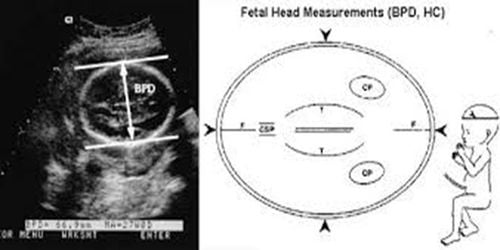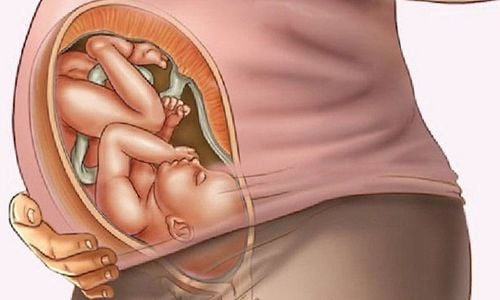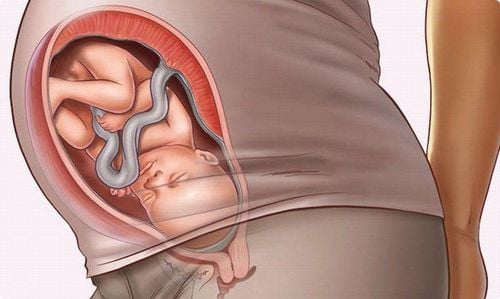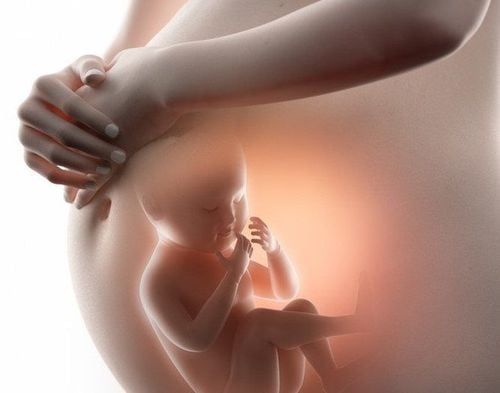This is an automatically translated article.
The intrauterine pregnancy technique is performed for the purpose of changing the position of the fetus in the uterus, helping the mother to give birth naturally.
1. What is internal rotation?
Fetal rotation is a technique used to change the position of the fetus from the erratic position, the difficult one, the one that cannot give birth to the one that can give birth normally vaginally. In which, there are 2 techniques of fetal rotation including: external fetal rotation and internal fetal rotation, also known as external fetal rotation and internal fetal rotation.
External fetal rotation is applied when the pregnancy is nearly full term, helping to change the fetal shoulder and buttock position into the forward position. Intrauterine fetal rotation is a technique of intrauterine fetal rotation, applied during delivery to transform the shoulder into the breech position.
2. Indication for internal rotation of pregnancy when?
In order for a woman to have a normal birth, the fetus must lie in the breech position. Internal fetal rotation is indicated when the fetus is in the transverse position.
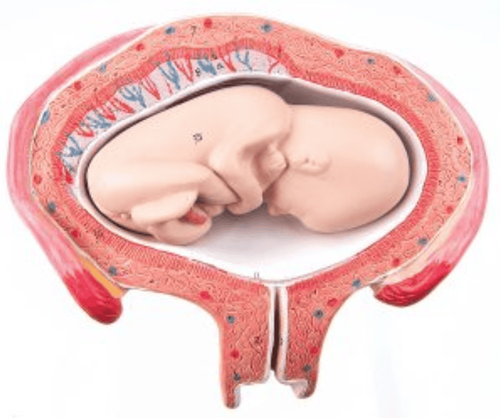
Nội xoay thai được chỉ định khi thai nhi ở vị trí nằm ngang
Transverse position is a condition in which the fetus lies horizontally or diagonally in the uterus. The poles of the fetus do not appear before the upper waist, instead the back, abdomen, and ribs. When the mother enters the labor stage, the position is lower and often shows the shoulders in front of the waist. At that time, the fetal shoulder can be palpated. This condition is called the shoulder. The shoulder is a type of horizontal position.
The purpose of the internal rotation of the fetus is to turn the horizontal position into the butt position. The doctor will put his hand into the uterus to grasp the baby's legs and pull down.
Indications for intrauterine fetal rotation:
In case of twin delivery, it is applied to the end of pregnancy. In case of single pregnancy but the fetus is small, the shoulder is small, the prognosis is poor. The intrauterine pregnancy technique is only performed during labor, when the neck is pregnant. The uterus is fully dilated, the uterus is still amniotic, there is no pelvic disproportion, the fetus is not impaired. And it must be done at a medical facility with adequate medical equipment, able to take care of the health of pregnant women and their unborn babies.
Intrauterine rotation is contraindicated in cases of preterm babies, uterus with surgical scars, uterus without amniotic fluid.
3. Steps to perform internal rotation of pregnancy
Check if the pregnant woman is eligible to perform intrauterine fetal rotation: Amniotic fluid, open cervix, wide pelvis, loose high position, small fetus Check fetal status: fetal health, fetal position, fetal head position, fetal bottom position The doctor presses the amniotic fluid and puts his hand into the uterine cavity, towards the fetal bottom to find the position of the fetal legs. Grasp the baby's leg and pull it down. This step is called amniotomy and pulling the fetus The fetus has been moved from transverse to breech position. Pregnant women can give birth naturally. Usually, the doctor will proceed to slowly pull the fetus out. After pregnancy, conduct placental removal and check the condition of the uterus, determine if the uterus is stable, broken or damaged Check the condition of the cervix Check the condition of the vagina and vulva . In the case of strong uterine contractions, the fetus will be squeezed tightly. Before performing the rotation, the contractions must be controlled by reducing contractions. In case the pregnancy is low, the amniotic fluid has broken, the hand of the fetus falls... then it is not possible to rotate the fetus, then a cesarean section must be performed.

Nếu sản phụ không đủ điều kiện xoay thai thì bác sĩ sẽ chỉ định tiến hành mổ
4. Follow-up after internal rotation of pregnancy
Intrauterine rotation of pregnancy without indications and techniques can cause uterine damage, uterine rupture, placental abruption, and pregnancy failure. Therefore, it is necessary to perform internal rotation of pregnancy at guaranteed medical facilities with full medical equipment and specialized doctors.
After cesarean delivery, the patient should be monitored for pulse, blood pressure, vaginal blood, and uterine contractions until a successful intrauterine rotation can be determined without affecting the patient's health.
To ensure the health of both mother and baby from pregnancy until the baby is born, Vinmec International General Hospital now offers a full maternity service to help pregnant women feel secure throughout their pregnancy. accompanied by a team of qualified and experienced medical doctors.
When choosing Maternity package at Vinmec, pregnant women will receive:
Regular check-ups, early detection of abnormal problems during pregnancy Pregnancy will be monitored by a team of good doctors Professional, experienced Maternity package will help facilitate the birthing process Newborns will be taken care of comprehensively
Please dial HOTLINE for more information or register for an appointment HERE. Download MyVinmec app to make appointments faster and to manage your bookings easily.
SEE MORE
Learn the technique of internal rotation of the fetus when the fetal position is abnormal Is it possible to perform the procedure of fetal rotation? Handling when the fetus is on the shoulder




